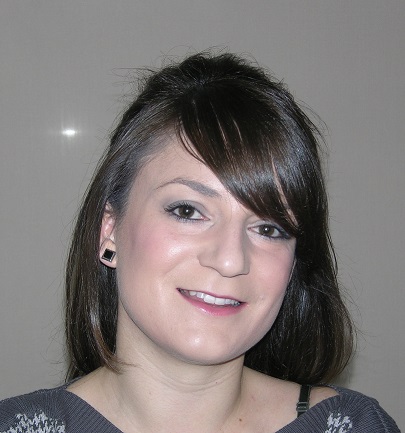Specialist Task Force 556:
Consolidation of SAREF and its community of industrial users, based on
the experience of the EUREKA ITEA 12004 SEAS project
Who we are:




See pictures from the left to the right:
| Team leader:
|
|
| Team Members:
|
|
Executive summary
The main objective of STF 556 was to consolidate SAREF and its community of industrial users based on the experience of the EUREKA ITEA 12004 SEAS (Smart Energy Aware Systems) project. The work has been going in two directions witch are also reflected in the structure of the two Technical Reports and the Technical Specification:
- Specify a set of ontology patterns for the modelling and the description of engineering-related data/information/systems, along with guidelines for instantiating these ontology patterns to create the SAREF extensions with homogeneous and predictable structures.
- Specify the SAREF publication framework, a uniform documentation website for SAREF that strengthens its community of industrial users and eases the development of future SAREF extensions.
The development of the SAREF publication framework was cut off the original budget.The STF has provided the following deliverables:
In addition:
- The development of SAREF and the SAREF extensions was migrated to the ETSI Forge, 37 issues were identified in SAREF, resolutions for most of them have been proposed and agreed on. These resolutions are being implemented, anticipating on the work needed for the development of SAREF v3 https://forge.etsi.org/rep/SAREF/saref-core/
- A proof of concept of the SAREF portal was developed and is online on the ETSI server https://saref.etsi.org/.
The amount of work delivered goes beyond the original scope of the STF. This work constitutes a very important contribution to the future SAREFv3.
What we did
ETSI SmartM2M tackles IoT, interoperability, and Semantic
Interoperability challenges, contributing to the digital transformation
of industry sectors in Europe. The SAREF standard ontology is a key
flagship to reach semantic interoperability in IoT and Web-based
applications where digitized assets play a central role. The first
version of SAREF (now Smart Applications REFerence ontology) was
published in November 2015 by ETSI TC SmartM2M, and subsequent
extensions are being developed to describe digital assets for various
domains including energy, environment, building, agriculture, smart
city. The SAREF initiative has been welcomed by the Smart Appliance and
IoT Industry which clearly indicated the intention to adopt the SAREF
ontology and its related communication framework. As confirmed in the EC
Rolling Plan for ICT Standardisation 2016/2017, SAREF is a main ontology
standard in the IoT ecosystem, and sets a template and a base for the
development of similar standards for the other verticals to unlock the
full potential of the IoT. Commercial products from industry already
exist that use SAREF and SAREF4ENER, and oneM2M, as a way to
interoperate with appliances from other vendors. The first
proof-of-concept solution was demonstrated in a recent study funded by
the Commission (SMART 2016/0082 study) as a follow up of the first SAREF
study (SMART 2013/0077). This successful story in the Energy domain can
be now used to provide guidelines to industry stakeholders in other IoT
domains that want to create similar interoperability solutions based on
SAREF.
The EUREKA ITEA 12004 SEAS (Smart Energy Aware Systems) project is a 35
partners and 13.5 M€ project that ran from Feb 2014 to Dec 2016 (
https://itea3.org/project/seas.html), and received
the ITEA Award of Excellence 2017. Its goal was to design and develop an
eco-system of smart things and services, collectively capable of
optimizing the energy efficiency within the future Smart Grid. 100 use
cases were defined by 35 partners. From these use cases one identified
gaps not yet covered by SAREF to be filled in the SEAS knowledge model.
SAREF focuses on the notion of Device, while industry use cases often
require some description of the physical systems and their connections,
value association for their properties, and the activities by which such
value association is done. The SEAS ontology development was initiated
during a workshop that gathered 45 participants during 3 days and
continued with close collaborations between ontology engineering
experts, domain experts, and industry software architects. The result is
a modular and versioned ontology with all the terms it defines having
the same namespace (
https://w3id.org/seas/). Ontology patterns are
like design patterns in object oriented programming. They describe
structural, logical, or naming, best practices that one can consider
when building an ontology.
The SEAS ontology contains a core of
SEAS reference ontology patterns that can be instantiated to create the
SEAS ontology itself with a homogeneous and predictable structure for
the modelling and the description of any kind of engineering-related
data/information/systems. This STF consolidated the SAREF ontology
adapting the SEAS strategy, and filled some of the representational
gaps that were identified.
One part of the effort of this STF was dedicated to support the
inclusion of the SEAS ecosystem in the ETSI SAREF/oneM2M mainstream.
The remaining part of the work of this STF was attaching the general
need of facilitating the inclusion and self-contribution of the actors
form the different vertical business sectors (not only the energy one,
but starting from the energy one) by creating tools (portals,
feedbacks and bug reporting, etc) and procedures to enable these
players to provide their feedbacks and proposals.
The STF 556 produced 2 Technical Reports and 1 Technical
Specification.
The first Technical Report (DTR/SmartM2M-103549 https://www.etsi.org/deliver/etsi_tr/103500_103599/103549/01.01.01_60/tr_103549v010101p.pdf) describes high-level
use cases and requirements covered by the SEAS reference ontology
patterns that can bring additional value to SAREF and its extensions.
Generic ontology patterns are valid for SAREF and could motivate some
changes in SAREF. Some of these ontology patterns are instantiated for
different verticals (e.g., types of electric power systems and topology
of energy grids), and can therefore motivate some changes in some SAREF
extensions (SAREF4ENER for example). The second Technical Report
(DTR/SmartM2M-103608
https://www.etsi.org/deliver/etsi_tr/103600_103699/103608/01.01.01_60/tr_103608v010101p.pdf ) specifies, in collaboration with the ETSI IT
department, the SAREF publication framework: a uniform documentation
website for SAREF and its extensions such that (1) the documentation is
more designed for domain experts and software developers instead of
ontology engineers, (2) industries can like or share the content,
provide useful feedback to SAREF developers or suggest additions. As a
beneficial side effect, SAREF developers would get to know more about
the SAREF community and who is using the ontology.
In addition to that, the STF produced 1 Technical Specification
(DTS/SmartM2M-103548
https://www.etsi.org/deliver/etsi_ts/103500_103599/103548/01.01.01_60/ts_103548v010101p.pdf), with the scope to specify updates to SAREF for
consolidating it with the experience of the SEAS project. In the context
of the proposed STF, it may be the case that some of the new
requirements will lead to proposals to produce other Technical
Specifications, with the scope to specify updates to extensions of
SAREF.
For more details, see our Terms
of Reference
Why we did it
The value of SAREF is strongly correlated with the size of its
community of users, and ontologies must be available on the Web. As
such, SAREF users’ community and the industry actors need be attracted
to SAREF with clear documentation and a clear indication about how to
provide their input and the kind of input that they can provide.
The ETSI members that contribute to SAREF will be therefore able to get
benefit from feedback coming from its open community of industrial
users, to better plan new evolution of the current and future
extensions, and reduce the costs of developing these extensions. That
being said, the development of SAREF must remain in ETSI's hands to
ensure high quality standards are met, and users that provide feedback
must understand the implication in terms of IPR. The publication and/or
use of such feedback must therefore be controlled by ETSI, but the
possibility to provide feedback will be open to the world. This STF will
specify, in collaboration with the ETSI IT department, the SAREF
publication framework to reinforce the engagement of its community of
users and enable them to implement solutions with SAREF faster.
The final vision is to make the business community able to provide
their input to SAREF and to maintain SAREF without the need of a
special support form ETSI, but just with a revision from the ETSI
members, and in particular from SmartM2M.
From the 100 use cases defined by 35 partners in the ITEA2 SEAS project,
one identified gaps not yet covered by SAREF to be filled in the SEAS
ontology. SAREF focuses on the notion of Device, while industry use
cases in SEAS all required some description of the physical systems and
their connections, value association for their properties, and the
activities by which such value association is done. The SEAS ontology
patterns are applicable to multiple engineering-related verticals such
as Smart Grids, Micro Grids, Smart Home, Smart Building, Electric
Mobility, Industry of the Future/Industry 4.0, including all their field
devices/processes/systems, measurements, environment, actors/players and
their relations, as well as flexibility/trading/business related
aspects.
Some industrial groups such as ENGIE expressed the interest to use the
SEAS ontology for their domains and extend it for other projects where
cross-domain semantic interoperability is of utmost importance.
Incorporating SEAS reference ontology patterns in SAREF will help
covering additional generic use cases and achieving greater
interoperability. Instantiations of these patterns will specialize these
use cases to multiple industry sectors, with similar ontological
structures, making it easy for industrials to understand the overall
structure of SAREF using analogy.
Also, the SEAS reference ontology patterns extend and are aligned to the
core of the following ontologies: OGC and W3C joint Semantic Sensor
Network ontology (SOSA/SSN), QUDT (Quantity, Unit, Dimension and Type),
and SAREF. Therefore, the STF contributed to the convergence of
the different reference ontologies relevant for the IoT domain.
At the same time, strict requirements were adopted for the SEAS
ontologies publication framework. These were defined in close
collaborations between ontology engineering experts, domain experts, and
industry software architects. The SEAS ontology is published as a
modular ontology, versioned, with all the terms it defines having the
same namespace. The two latter choices avoid existing implementations to
break when new versions are released, or when new editorial choices are
made. In addition to this, all the metadata and publication best
practices should be met, and the documentation webpages should be
harmonized and adapted to target SAREF users instead of ontology
engineers. The STF aimed at translating these requirements to
SAREF to make its adoption faster for software engineers and domain
experts
The work of this STF was therefore to extend the SAREF standard
considering:
- The relevant use cases defined by the ITEA2 SEAS project;
- Other standard ontologies such as W3C&OGC SOSA/SSN, and QUDT;
- Preservation of alignments with oneM2M base ontology, SAREF
adoption with ISG CIM;
- Recommendations from AIOTI and influencing them;
- Semantic versioning, metadata, publication, and documentation,
best practices for ontologies.
How we did it
The STF 556 work consists of three main tasks:
- Task T1: Project Management
Objectives: Coordination, communication, reporting and leading of the
STF team activities, in collaboration with the ETSI secretariat and TC
SmartM2M. The project will be organized in an Agile/Scrum way for the
sake of efficiency and to foster the quick development of the new SAREF
extensions.
- Task T2: SAREF requirements gathering
Objectives: This task will gather requirements for consolidating the
SAREF ontology with new reference ontology patterns, using the
experience of the SEAS project. The experts will review the SEAS use
cases, the 4 core SEAS modules, the 32 SEAS module (especially those
related to verticals partly modelled in existing SAREF extensions), and
the OGC&W3C SSN ontology, to gather a new set of requirements to
update SAREF and its extensions.
- Task T3: SAREF extension development
Objectives: The objective is to consolidate the SAREF ontology, and all
the relevant SAREF extensions, adapting the SEAS reference ontology
patterns, in order to achieve higher semantic interoperability.
- Task T4: Specification of the SAREF publication framework
Objectives: The objective is to initiate, in collaboration with the ETSI
IT department, the specification of the SAREF ontology publication
framework (gather requirements and develop the corresponding portal),
reinforcing the engagement of its community of users. ETSI members will
be able to better plan new evolution of the current and future
extensions, and this publication framework will be reusable for reducing
the costs of developing these extensions.
The STF 556 intends to work in close collaboration with (but not limited
to):
- oneM2M Partnership Project (including oneM2M TP WG5 MAS
Management, Abstraction and Semantics)
- ETSI Board (IoT Strategic Group)
- ISG CIM
- European Commission, DG CONNECT
Deliverables
List of deliverables produced by the STF 556:
| Deliv..
|
Work
Item code
|
Title
|
| D1
|
DTR/SmartM2M-103549 (TR 103 549)
|
Guidelines for consolidating SAREF
with new reference ontology patterns, based on the experience
from the EUREKA ITEA SEAS project
|
| D2
|
DTS/SmartM2M-103548 (TS 103 548)
|
SAREF consolidation with new
reference ontology patterns, based on the experience from the
EUREKA ITEA SEAS project
|
| D3
|
DTR/SmartM2M-103608 (TR 103 608)
|
SAREF publication framework
reinforcing the engagement of its community of users
|
Time plan
This was the expected time scale for the production of the
deliverables:
N
|
Task
/ Milestone / Deliverable
|
Target date
|
| M0
|
Start of work
|
Jun 2018
|
| T1
|
Project management
|
Jun 2018 - Jun 2019
|
| T2
|
SAREF requirements gathering
|
Jun 2018 - Feb 2019
|
| T3
|
SAREF extension development
|
Nov 2018 - May 2019
|
| T4
|
Development of the SAREF publication framework
|
Jun 2018 - May 2019
|
| M1
|
Early draft of TRs D1, D3(Task 2 and 4) and Progress report
available for TB review 2 weeks before SmartM2M#47
Progress report approved by TC SmartM2M during SmartM2M#47
|
25 Sep 2018
|
| M2
|
Final draft TR D1(Task 2) , early draft TS D2(Task 3) and
Progress report available for TB review 2 weeks before
SmartM2M#49
Progress report and Final draft TR D1 approved by TC SmartM2M
during SmartM2M#49
|
Feb 2019
|
| M3
|
Final draft TR D3(Task 4) and TS D2(Task 3) and Progress
report available for TB review 2 weeks before SmartM2M#50
Final report and Final draft TR D3 and TS D2 approved by TC
SmartM2M during SmartM2M#50
|
Jun 2019
|
| M4
|
Deliverables published
|
Jul 2019
|
For further details, please contact the STF Leader: Maxime Lefrançois at
maxime.lefrancois@emse.fr